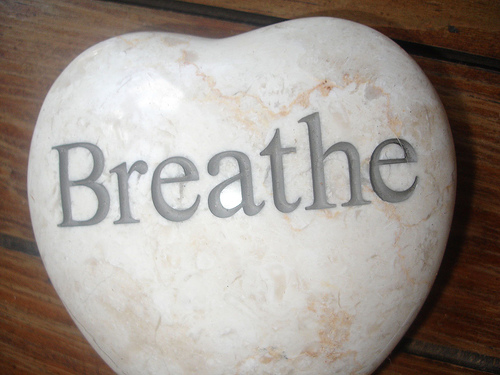514.223.5327
MAKE AN APPOINTMENTHow to Breathe
I often ask my clients if anyone has ever taught them how to breathe and more often than not I learn that they have not had this essential life instruction. If you were fortunate enough to have had voice or wind instrument training or if you are an athlete, you likely learned how to breathe with your diaphragm to improve your performance. Most of us breathe from our chest however and in doing so we unknowingly trigger the stress response.
Our brains and bodies need a lot of oxygen to function effectively. Practicing diaphragmatic breathing teaches our body to take fewer deeper breaths to improve the oxygenation of our lungs, heart and brain. Breathing more slowly and deeply also initiates the parasympathetic nervous system which invites a relaxation response in the body. And finally, exhaling completely evacuates more carbon dioxide, which reduces the stress hormone called cortisol.
Here is how to do it:
Put one hand on your belly and the other on your chest. Notice which hand is moving the most when you breathe.
Count the number of times you breathe in and out by watching the second hand for one minute. Fifteen to 25 is too many, 12 to 15 is average and four to eight is the window you will aim for in a relaxation response. Make a note of your baseline breath rate.
Keeping one hand on your chest and the other on your belly, breathe in and allow the air to expand your diaphragm while keeping the hand on your chest relatively still. When full, hold your muscles slightly before you exhale.
Now exhale, pushing the hand on your diaphragm inward until all the air is out of your lungs. If you can still talk then there is still air in there and you need to exhale more. Again, pause, hold your muscles slightly before you begin to inhale.
Try practicing diaphragmatic breathing for 10 or 15 minutes a day during daylight hours. See if you can bring the number of breaths you take in a minute down to the optimal level of four to eight. Try using stickers as reminders to encourage your practice in strategic places such as at your desk, your bathroom mirror, your car…
Diaphragmatic breathing can be especially helpful for health problems such as hypertension, asthma, heart disease, anxiety, panic disorder, depression, sleep problems, chronic pain, circulatory problems, substance abuse, learning problems and anger management.
If you or anyone you know need help managing stress, give us a call, we are here to help.

